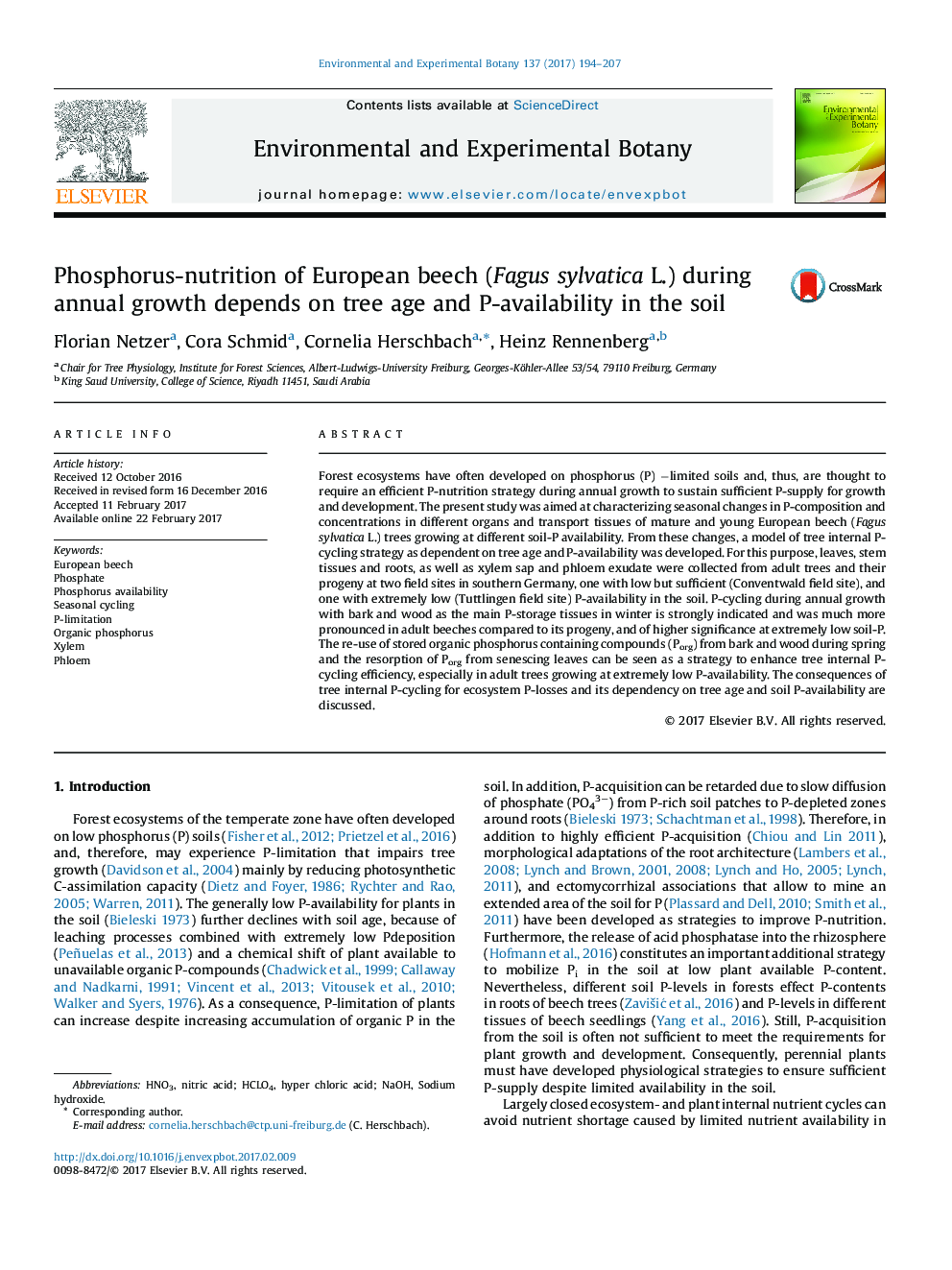| کد مقاله | کد نشریه | سال انتشار | مقاله انگلیسی | نسخه تمام متن |
|---|---|---|---|---|
| 5766632 | 1628040 | 2017 | 14 صفحه PDF | دانلود رایگان |

- Phosphorus nutrition was characterized during the annual growth of Fagus sylvatica.
- Organic phosphorus storage and intense P re-cycling are hallmarks of P nutrition.
- Phosphorus storage differs between adult beech trees and their offspring.
- Soil phosphorus is not reflected by phosphorus contents of twig tissues and leaves.
Forest ecosystems have often developed on phosphorus (P) âlimited soils and, thus, are thought to require an efficient P-nutrition strategy during annual growth to sustain sufficient P-supply for growth and development. The present study was aimed at characterizing seasonal changes in P-composition and concentrations in different organs and transport tissues of mature and young European beech (Fagus sylvatica L.) trees growing at different soil-P availability. From these changes, a model of tree internal P-cycling strategy as dependent on tree age and P-availability was developed. For this purpose, leaves, stem tissues and roots, as well as xylem sap and phloem exudate were collected from adult trees and their progeny at two field sites in southern Germany, one with low but sufficient (Conventwald field site), and one with extremely low (Tuttlingen field site) P-availability in the soil. P-cycling during annual growth with bark and wood as the main P-storage tissues in winter is strongly indicated and was much more pronounced in adult beeches compared to its progeny, and of higher significance at extremely low soil-P. The re-use of stored organic phosphorus containing compounds (Porg) from bark and wood during spring and the resorption of Porg from senescing leaves can be seen as a strategy to enhance tree internal P-cycling efficiency, especially in adult trees growing at extremely low P-availability. The consequences of tree internal P-cycling for ecosystem P-losses and its dependency on tree age and soil P-availability are discussed.
208
Journal: Environmental and Experimental Botany - Volume 137, May 2017, Pages 194-207